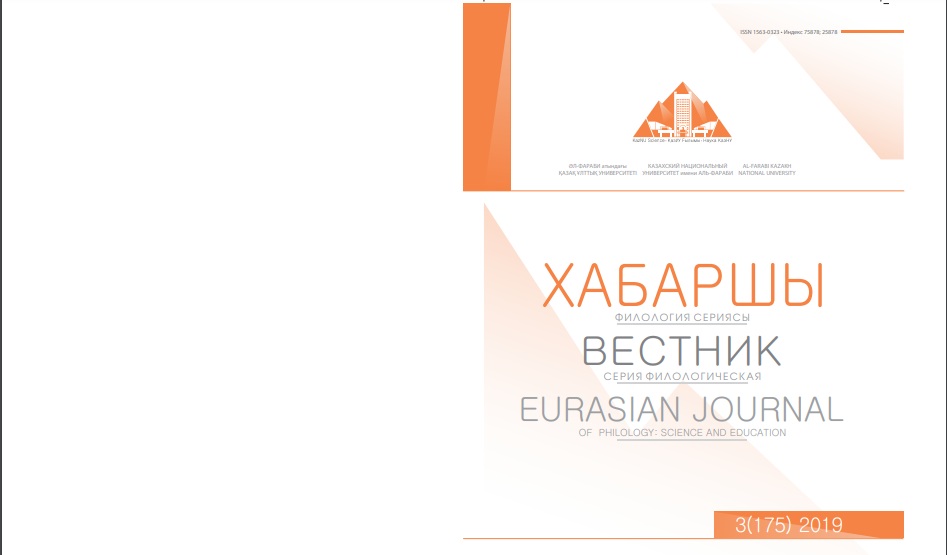Zoomomorphisms in the linguistic picture of the world (based on the description of concepts «мan» and «woman» in russian and kazakh languages).
DOI:
https://doi.org/10.26577/EJPh-2019-3-ph20Abstract
In the article zoomorphisms are described as a fragment of the Russian and Kazakh linguistic pictures
of the world and are considered the national and cultural specifics of zoomorphisms associated with differences in the way of life and traditions of ethnic groups. In the article the most widespread examples of
the use of zoomorphisms of the Russian and Kazakh languages are analyzed based on the description of
concepts «мan» and «woman. In this work is noted that zoomorphisms were widely adopted in communicative practice. They can be used as the address to people with various social status, describe external
details and characters. In the article are considered the frequency of use of zoomorphic characteristics
used both to describe the appearance and character of men and women in Russian and Kazakh languages. The conclusion is that, thanks to this type of imaginative metaphor person can briefly, concisely, but
at the same time clearly express their state of mind and to describe the other person. The article states
that it is for this reason zoomorphism are highly popular, demonstrating the increase in the amount due
to the fact a variety of emotions cause human association with different animals






